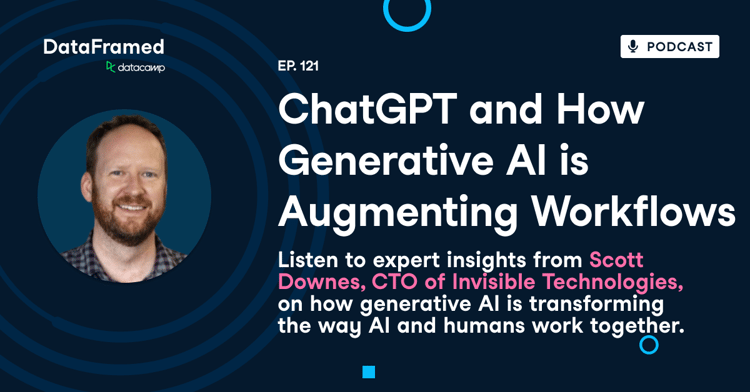Text generation is a process where an AI system produces written content, imitating human language patterns and styles. The process involves generating coherent and meaningful text that resembles natural human communication. Text generation has gained significant importance in various fields, including natural language processing, content creation, customer service, and coding assistance.
Text Generation Explained
Text generation works by utilizing algorithms and language models to process input data and generate output text. It involves training AI models on large datasets of text to learn patterns, grammar, and contextual information. These models then use this learned knowledge to generate new text based on given prompts or conditions.
At the core of text generation are language models, such as GPT (Generative Pre-trained Transformer) and Google’s PaLM, which have been trained on vast amounts of text data from the internet. These models employ deep learning techniques, specifically neural networks, to understand the structure of sentences and generate coherent and contextually relevant text.
During the text generation process, the AI model takes a seed input, such as a sentence or a keyword, and uses its learned knowledge to predict the most probable next words or phrases. The model continues to generate text, incorporating context and coherence, until a desired length or condition is met.
Examples of Real-World Text Generation Applications
Text generation finds application in various real-world scenarios, such as:
- Content creation. AI-powered systems can generate articles, blog posts, and product descriptions. These systems are trained on vast amounts of data and can produce coherent content in a fraction of the time it would take a human writer.
- Chatbots and virtual assistants. AI-powered chatbots and virtual assistants use text generation to interact with users in a conversational manner. They can understand user queries and provide relevant responses, offering personalized assistance and information.
- Language translation. Text generation models can be utilized to improve language translation services. By analyzing large volumes of translated text, AI models can generate accurate translations in real time, enhancing communication across different languages.
- Summarization. Text summarization offers a concise version of information by identifying the most important points, which can help generate summaries of research papers, blog posts, news articles, chapters, and books.
What are the Benefits of Text Generation?
Text generation offers several advantages:
- Increased efficiency. AI-powered text generation can automate content creation, reducing the time and effort required for manual writing. This can enhance productivity and allows users to generate large volumes of content at scale.
- Improved personalization. Text generation models can be fine-tuned to generate personalized content based on user preferences and historical data. This enables tailored recommendations, personalized marketing messages, and customized responses in customer service interactions.
- Language accessibility. Text generation enables translation services and speech synthesis, making information accessible to individuals who may have difficulties reading or understanding written text. It opens up new possibilities for inclusive communication and enhances accessibility.
What are the Limitations of Text Generation?
Text generation also has certain limitations:
- Lack of contextual understanding: Text generation models often struggle with comprehending the broader context and nuances of language. They generate text based on patterns in the training data without truly understanding the meaning or intent behind the words. This can lead to inaccuracies, ambiguity, or nonsensical outputs.
- Overreliance on training data: Text generation models heavily rely on the quality and diversity of the training data they are exposed to. If the training data is limited, biased, or doesn't represent the full range of language variations, the generated text may be biased, lack diversity, or exhibit other shortcomings.
- Difficulty in handling rare or unseen scenarios: Text generation models may struggle when faced with uncommon or rare scenarios that were not well-represented in the training data. They may produce incorrect or nonsensical responses when encountering unfamiliar or out-of-context inputs.
- Ethical considerations: Text generation raises ethical concerns, particularly in relation to misinformation, propaganda, or generating harmful content. If not carefully monitored and guided, text generation models can be misused to spread misinformation, amplify biases, or engage in malicious activities.
Top Performing Text Generation Models
The ranking of text generation models is based on benchmarking conducted by GPT4All and lmsys.org.
- GPT-4. OpenAI's (and the world's) most advanced system, which generates responses that are both safe and useful.
- Claude. A next-generation AI assistant developed by Anthropic, designed to be helpful, honest, and harmless.
- ChatGPT. This model is a lot like InstructGPT, but it's trained to follow prompts and provide detailed responses.
- Nous-Hermes. A state-of-the-art language model that's been fine-tuned on over 300,000 instructions, developed by Nous Research.
- Falcon LLM. This is a foundational large language model with 40 billion parameters trained on one trillion tokens developed by TII.
- PaLM 2. The next-generation large language model that builds on Google's legacy of groundbreaking research in machine learning and responsible AI.
- LLaMA. A foundational and state-of-the-art open-source 65 billion parameter large language model developed by Meta AI.
You can also review ChatGPT and GPT-4 Open Source Alternatives to build your customized text generation model with limited compute resources.
Using Text Generation for Data Science Projects
Text generation tools are becoming incredibly useful for tech professionals. Tools like ChatGPT, GitHub Copilot, and other AI-based solutions can help with routine tasks and free up time for more enjoyable work.
I've found ChatGPT immensely helpful for little things that would otherwise be tedious, such as suggesting better titles for blog posts based on key themes.
If I'm stuck on a minor coding issue, I'll describe the context, and it can often point me in the right direction. With sufficient detail and follow-up prompts, ChatGPT has even generated entire functional codebases for the data science project.
If you want to learn how I use ChatGPT to make my data science work easier and more enjoyable, follow my guide: A Step-by-Step Guide to Using ChatGPT For Data Science. The guide walks you through every step of a data science project, showing how ChatGPT can assist with mundane or complex tasks at each stage.
Ultimately you need to understand that these tools don't replace human intelligence; they augment it well. Text-generative AI still makes occasional errors and lacks common sense, so I always double-check before adding any generative AI produced text to a project.
Want to learn more about AI and machine learning? Check out the following resources:
FAQs
How does text generation work?
Text generation with deep learning involves several steps:
Data Collection and Preprocessing: Text data is gathered, cleaned, and tokenized into smaller units for model inputs; Model Training: The model is trained on sequences of these tokens, adjusting its parameters to predict the next token in a sequence based on the previous ones; Generation: After training, the model can generate new text by predicting one token at a time based on the provided seed sequence and previously generated tokens; Decoding Strategies: Different strategies like greedy decoding, beam search, or top-k/top-p sampling can be used to select the next token; Fine-tuning: Pre-trained models are often fine-tuned on specific tasks or domains for better performance.
What data are text generation models trained on?
Text generation models are trained on diverse sources such as books, news articles, websites, academic papers, and dialogues/conversations.
Can text generation models create completely original content?
Text generation models are trained on existing text data, so they generate new content by combining and rearranging existing patterns and phrases. While they can produce unique combinations, the generated text is ultimately based on what the model has learned from the training data.
Can text generation models understand and generate content in multiple languages?
Yes, text generation models can be trained on multilingual datasets, allowing them to generate text in different languages. However, the quality and accuracy of the generated text may vary depending on the language and the amount of training data available.
Is text generation limited to written text, or can it generate spoken language as well?
Text generation can be used for both written and spoken language. In addition to generating written content, AI models can be employed for speech synthesis, converting text into natural-sounding spoken words.
How can text generation be used to combat bias and promote fairness?
Bias in text generation can arise from biased training data or the inclusion of biased language patterns. To address this, developers and researchers need to carefully curate training datasets, identify and mitigate biases, and implement fairness measures during model training and evaluation.
What are some future advancements and challenges in text generation?
Future advancements may involve developing models that better understand context, generate more diverse and creative content, and incorporate user feedback to improve accuracy. Challenges include ensuring ethical and responsible use of text generation technology, addressing biases, and enhancing models' ability to comprehend nuanced language nuances and generate content that aligns with human values.

As a certified data scientist, I am passionate about leveraging cutting-edge technology to create innovative machine learning applications. With a strong background in speech recognition, data analysis and reporting, MLOps, conversational AI, and NLP, I have honed my skills in developing intelligent systems that can make a real impact. In addition to my technical expertise, I am also a skilled communicator with a talent for distilling complex concepts into clear and concise language. As a result, I have become a sought-after blogger on data science, sharing my insights and experiences with a growing community of fellow data professionals. Currently, I am focusing on content creation and editing, working with large language models to develop powerful and engaging content that can help businesses and individuals alike make the most of their data.


